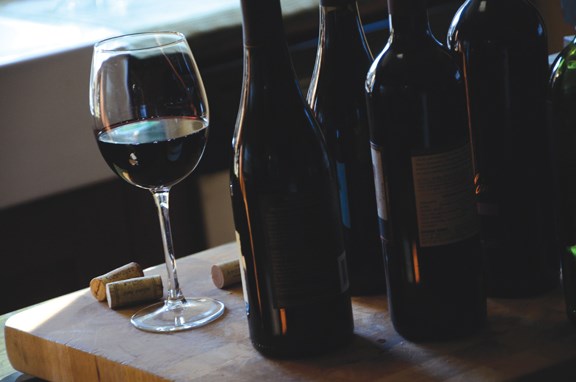One mention of Malbec and chances are your mind and palate will go straight to Argentina.
That’s not surprising. The South American producer has done for Malbec what Australia did for Shiraz, or New Zealand for Sauvignon Blanc. However, the fact that Malbec is now a household name, even if propelled by far-away Argentina, hasn’t hurt the cause of this impossibly beautiful corner of France.
Here, chateaux (in some cases dating back to the middle ages) seem sometimes to command almost every hilltop, with often (though not always) immaculately nurtured vineyards rolling down their slopes.
As in many of the regions bordering the Mediterranean, grape growing dates from Roman times, but the vines were devastated by Phylloxera in the 19th century, a fact that very much propelled Malbec’s new world propagation.
A further series of events, from great wars to the devastating frost of 1956, almost killed the resurrection of what had once been one of Europe’s most prolific varieties, while even in Bordeaux it fell from favour as a long-used blending grape.
Now, with a new and well-travelled generation of winemakers holding the reigns (as well as an influx of investment from all corners), Cahors’ fortunes (still closely tied to Malbec) are once again on the rise.
While the variety enjoys a reputation for approachability, the scale of production from Mendoza’s valley floors over the years has been such that it’s sometimes dismissed as being too homogenous. Although growers are planting higher up the Andean slopes.
Blending their new world exposure with traditions that in many cases date back several generations, this new breed of Cahors vigneron is able to combine the incomparable benefits afforded by centuries of learning the terroir with a modern outlook that combines the best of all worlds.
At Château de Gaudou Vire sur Lot, still youthful but well-travelled, seventh-generation winemaker Fabrice Durou gained some of his new world experiences working at a multi-client Yarra Valley crush pad. Part of that stage found him seeking a new direction from that pursued by his father and grandfather, he explains as he pours his 2012 Le Sang de Vignette.
It is a luscious, velvet-toned but superbly structured Malbec that was fermented in a newly acquired concrete egg fermenter of the kind now employed by leading edge winemakers the world over (91 points).
The winemaker now makes two distinct lines, one carrying on the family styles marked by more traditional labelling, a “tier” selection that gives prominence to the higher-terraced and more complex geologies.
He also makes Château de Gaudou Reserve Caillou, from 60-year-old vines on a high-elevation, southwest-facing, almost all-gravel slope.
He ferments it in a large wooden vat, using carbonic maceration and punch down to make a plush and opulent wine that sports a complex, definite edge beneath its floral, violet-toned opening and lingering pepper spice that often accompanies more premium offerings.
The project (to focus on just one stoney enclave) was a departure from what had been done before, but there’s no question it challenges the best of any premium “new world” styled Malbec
I’ve seen from elsewhere, while retaining all the appeal and complexity that this ancient place so often reveals.
• • •
Grab your tickets quick if you want to take in Top Drop Vancouver (Sept. 15-16), a new wine and beverage event that promises to showcase a small but truly interesting range of producers, highlighted by The Main Event tasting on Sept. 16 ($49). Find full details at topdropvancouver.com, and more info here next week.
Tim Pawsey writes about wine for numerous publications and online as the Hired Belly at hiredbelly.com. Contact: [email protected].



